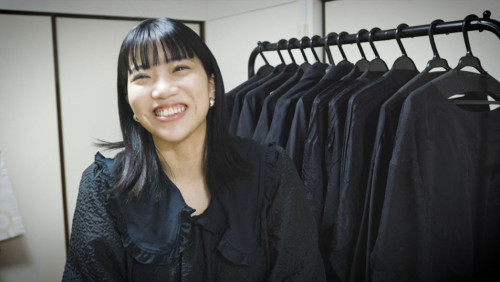Works
Short film

「KIMONOルネッサンス」 Kimono Renaissance (2023)
Documentary/ 2023/ Japan/ 4K/ Stereo/ Color/ 10min
広瀬嶺さんは京都で舞妓として活動をした後、和裁の仕事など着物に関わる仕事をしてきた。その仕事の過程で古い着物が大量に捨てられたり、古物市で乱雑に扱われている事を知り、胸を痛める。彼女は廃棄される着物を集め、アップサイクルに挑戦する。
-------
近年、ファッション業界の環境負荷が国際的な課題になっています。いわゆるファストファッションの台頭による「大量生産・大量消費・大量廃棄」からの転換は、待ったなしの状態です。 環境省の2020年の調査では、国内の衣服の年間新規供給量(国内生産量+輸入量-輸出量)は81.9万トンで、その約9割の78.7万トンが事業所や家庭から使用後に手放され、そのうち51.0万トン(64.8%)が廃棄されると推計しています。家庭のゴミからは毎日、大型トラック約130台分を焼却・埋め立てしていることになります。
こうした状況に世界は変わり始めています。フランスでは2022年1月に、企業が売れ残った新品を廃棄することを禁止する世界初の「衣服廃棄禁止令」が施行されました。日本でも、消費者庁が2021年9月から著名人・有識者による「サステナブルファッション・サポーター」制度をスタートさせたのを始め、経済産業省、環境省と連携しながら取り組みを進めています。 そしていま、一人ひとりの消費者にも「意識改革」の必要性が突きつけられています。もともと日本の着物は、反物を直線裁断して縫い合わせる無駄のないつくりで、親から子へと世代をこえて受け継がれる“サステナブル”なものでした。まさにその精神に、立ち戻ることが求められているのです。(Yahoo! Japan ドキュメンタリー DOCS for SDGsより)
監督・撮影・編集・録音・プロデューサー:太田信吾
企画・製作:Yahoo! Japan ドキュメンタリー DOCS for SDGs
|
After years working as an apprentice geisha, Rei HIROSE started to work with kimonos and traditional Japanese tailoring. Within this field, she was saddened to hear that every year, a large number of kimonos are thrown away or mishandled at second-hand stores. She then started to collect these discarded kimonos and took up the challenge to upcycle them. |
|
--------------- |
|
|
|
In recent years, the environmental impact of the fashion industry has become a huge subject worldwide. The boom of fast-fashion created a system of “mass production, mass consumption and mass disposal”. According to a survey conducted in 2020 by the Ministry of Environment, the annual supply of new clothes in Japan (domestic production + import / export) represents 819 000 tons, from which 787 000 tons (90%) are thrown away by businesses or households after being used. 510 000 tons (64,8%) are estimated to be discarded. This represents approximately 130 large truckloads of household waste that are incinerated or landfilled every day. But the world is starting to change. |
|
|
|
In January 2022, France enacted the world’s first “Clothing disposal ban”, which prohibits companies from discarding unsold new products. In Japan as well, the Consumer Affairs Agency launched in September 2021 a program called “Sustainable Fashion Supporter”, consisting of celebrities and experts working in collaboration with the Ministry of Economy, Trade and Industry and the Ministry of Environment. Now, every consumer needs to raise their awareness. Traditionally, Japanese kimonos were made by cutting and sewing straight strips of fabric together to avoid waste, and were passed down from parents to children, generation after generation, making them “sustainable” by essence. We must now return to that spirit. (from Yahoo! Japan Documentary DOCS for SDGs)
|
| Director, Cinematography, Editing, Sound Recording, Producer: Shingo Ota Planning and production: Yahoo! Japan Documentary DOCS for SDGs
|
|
|
